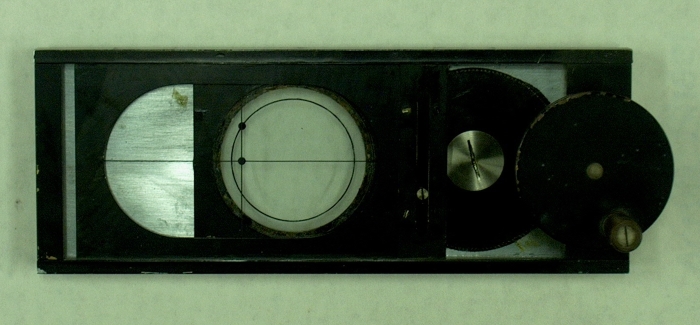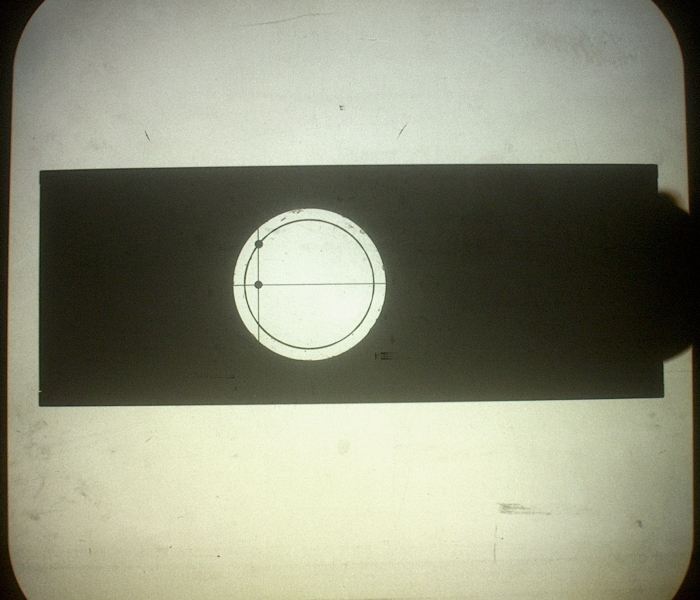Comparison of Circular and Linear Simple Harmonic Motion
(Companion demonstration to 40.03 -- Circular vs. mass-spring motion, and 40.18 -- Circular vs. pendular motion)
This apparatus has a transparent disc with a black circle and reference dot, mounted on a gear, and a slider, which has a second reference dot mounted on cross-wires. The slider has a slot that engages a pin on the idler gear (between the crank and the gear with the transparent disc). As one turns the crank, the dot on the circle moves around the circle in the same direction (but more slowly). The second dot moves back and forth in synchrony with the dot going around the circle. The cross-wires show the correspondence between the motions of the two dots, and that the motion of the dot along the line is one component of the motion around the circle. For this component, the velocity is zero at the turning points and maximum (minimum) in the middle. The acceleration is maximum (minimum) at the turning points and zero in the middle.
The device may be placed on an overhead projector, producing an image like the one below:

